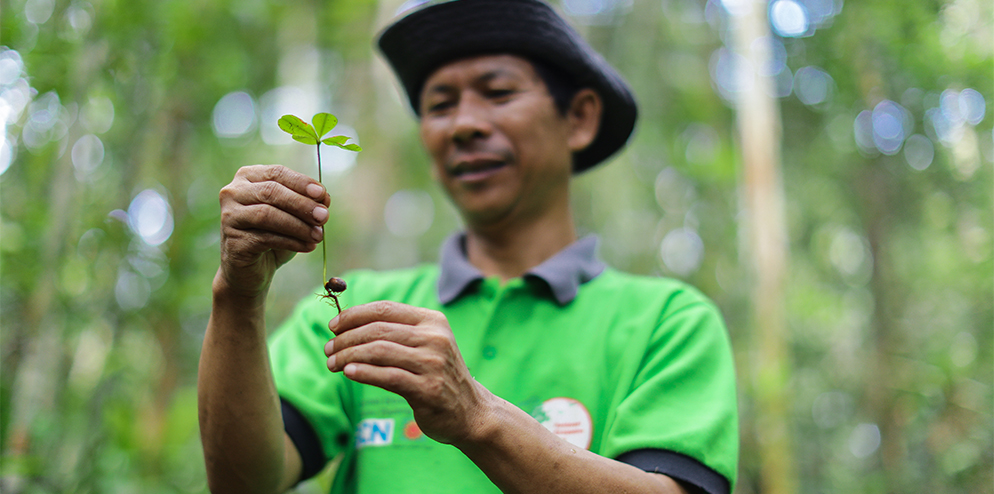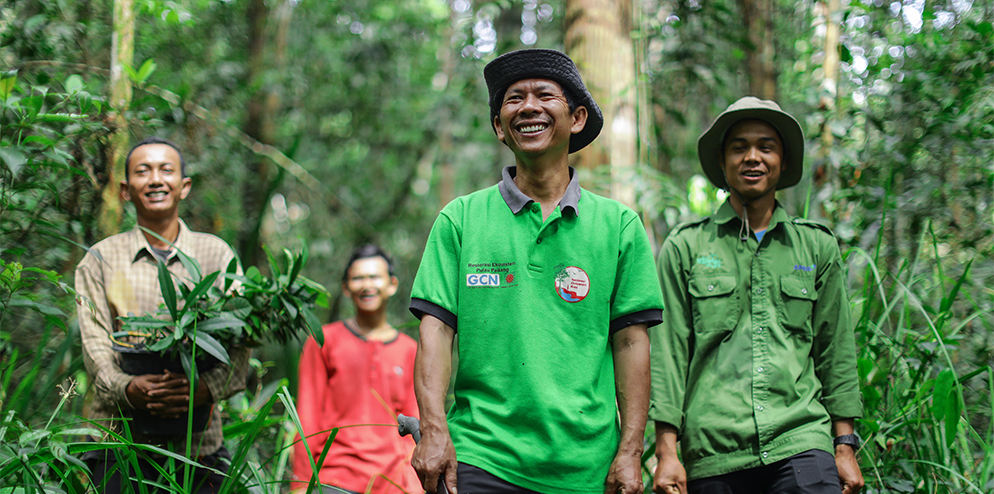Developing a sustainable long-term management strategy for the Kampar Peninsula requires a detailed measurement and understanding of its biodiversity.
RER currently manages nine natural seedling nurseries, consisting of seven nurseries in the Kampar Peninsula and two nurseries on Padang Island. The Kampar Peninsula and Padang Island each have one central nursery and several satellite nurseries. The largest nursery is located in the Kampar Peninsula, covering an area of 175m2, capable of accommodating up to 25,000 seedlings. Each year, RER’s natural seedling nurseries are able to produce more than 13,000 seedlings. Nurseries’ stock come from three sources in the surrounding natural forest: uprooted seedlings, seeds that have fallen from forest trees, and cuttings carefully and selectively taken from mature trees.
The use of uprooted seedlings involves carefully removing individual tree seedlings from the forest floor and placing them in planting bags with soil, to be maintained in a nursery. These seedlings are taken from locations in the forest where abundant seedlings exist, with the intention to plant them in a different location where few trees exist. Collection of tree seeds is dependent on seed production of various trees which is seasonal, sporadic, and varies annually.
Cuttings are easily obtained compared to seeds and they replicate the desirable traits, such as growth rate and form, of certain trees. Uprooted seedlings and cuttings are the most common sources of seedlings in RER. Gathering seedlings is a continuous process for the nursery teams, as natural mortality occurs due to transfer shock, root damage, insects or infections.
Seedlings remain in the nursery for approximately one year to ensure their roots, stem and leaves are strong and become ‘ready-to-plant’ between 12-18 months later.

Forest restoration (recovery) can either be through natural, passive regeneration or active regeneration of trees. Natural regeneration is the most cost-effective approach for recovering biodiversity, ecological processes, and/or ecosystem services under favourable ecological conditions.
In general, tropical ecosystems recover rapidly without human intervention and/or the addition of new disturbance such as illegal logging, land-clearing or fire. Active regeneration requires planting of nursery-grown seedlings, direct seeding, and/or the manipulation of disturbance regimes to speed up the recovery process, often at high cost.

RER uses a combination of these regeneration techniques as this is essential for attaining a richer species pool in the landscape. However, natural regeneration dominates because of the high level of forest cover (approx. 99%) that exists.
RER further implements an adaptive management approach whereby each annual working area block is assessed on its current condition and a suite of ecological and human factors are considered before applying a management activity.
Active regeneration is used where new, human-caused forest disturbance has occurred and/or where adequate natural regeneration is not occurring. RER’s goal for active regeneration is to establish 400 trees per hectare on a 5×5 meter spacing. Six months after planting, a survival check is carried out and dead seedlings are then replaced.